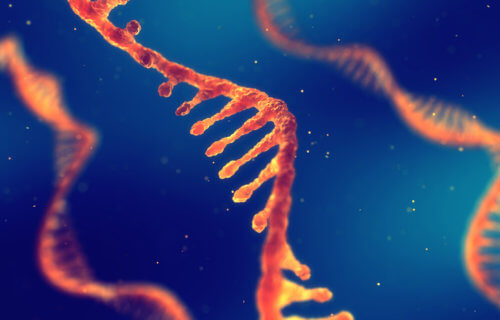
TOKYO, Japan — Where does life come from? It’s one of the most enduring questions in human history. Now, a new study may have finally found evidence pointing to the true origins of life on Earth. Scientists in Japan have become the first to create an RNA molecule that can replicate, diversify, and develop complexity on its own. Simply put, the molecule can evolve.
The breakthrough is providing the first empirical evidence that simple biological molecules can eventually transform into complex lifeforms. While many people may be familiar with Charles Darwin’s theory of evolution — especially the image of apes evolving into humans — scientists wanted to explore the evolution of molecules to cells to apes.
Did the human story start 4 billion years ago?
One theory over the last few decades has been that RNA molecules existed on Earth right after the planet’s formation. Scientists explain that these building blocks of life are vital for the function of cells in all organisms. The hypothesis is that RNA, proteins, and other biological molecules started to self-replicate and create diverse and more complex molecules around four billion years ago.
This process may have led to the emergence of life as we know it, moving from the dinosaurs to the plants and animals we see today. Although this theory has been around for years, the team at the University of Tokyo says it’s been difficult to recreate this process with RNA in a lab. The new study, however, successfully witnessed this evolutionary process.
“We found that the single RNA species evolved into a complex replication system: a replicator network comprising five types of RNAs with diverse interactions, supporting the plausibility of a long-envisioned evolutionary transition scenario,” says Assistant Professor Ryo Mizuuchi in a university release.

(CREDIT: © modified from Mizuuchi 2022)
Following Darwin’s theory
Unlike past studies, researchers say they used a unique RNA replication system that successfully goes through the steps of Darwinian evolution. This means the molecules undergo a “self-perpetuating process of continuous change based on mutations and natural selection.”
That evolutionary process allows different characteristics to appear, including ones which adapt to their environment and survive.
“Honestly, we initially doubted that such diverse RNAs could evolve and coexist,” Mizuuchi continues. “In evolutionary biology, the ‘competitive exclusion principle’ states that more than one species cannot coexist if they are competing for the same resources. This means that the molecules must establish a way to use different resources one after another for sustained diversification. They are just molecules, so we wondered if it were possible for nonliving chemical species to spontaneously develop such innovation.”
“The simplicity of our molecular replication system, compared with biological organisms, allows us to examine evolutionary phenomena with unprecedented resolution. The evolution of complexity seen in our experiment is just the beginning. Many more events should occur towards the emergence of living systems,” Mizuuchi adds.
“The results could be a clue to solving the ultimate question that human beings have been asking for thousands of years — what are the origins of life?” the researcher concludes.
The findings appear in the journal Nature Communications.

“The breakthrough is providing the first empirical evidence that simple biological molecules can eventually transform into complex life forms.
This statement begs the question: How did simple biological molecules have precisely those components that allowed them to transform into complex life forms? If they were acquired through natural selection, it would indicate purpose and that’s an oxymoron.